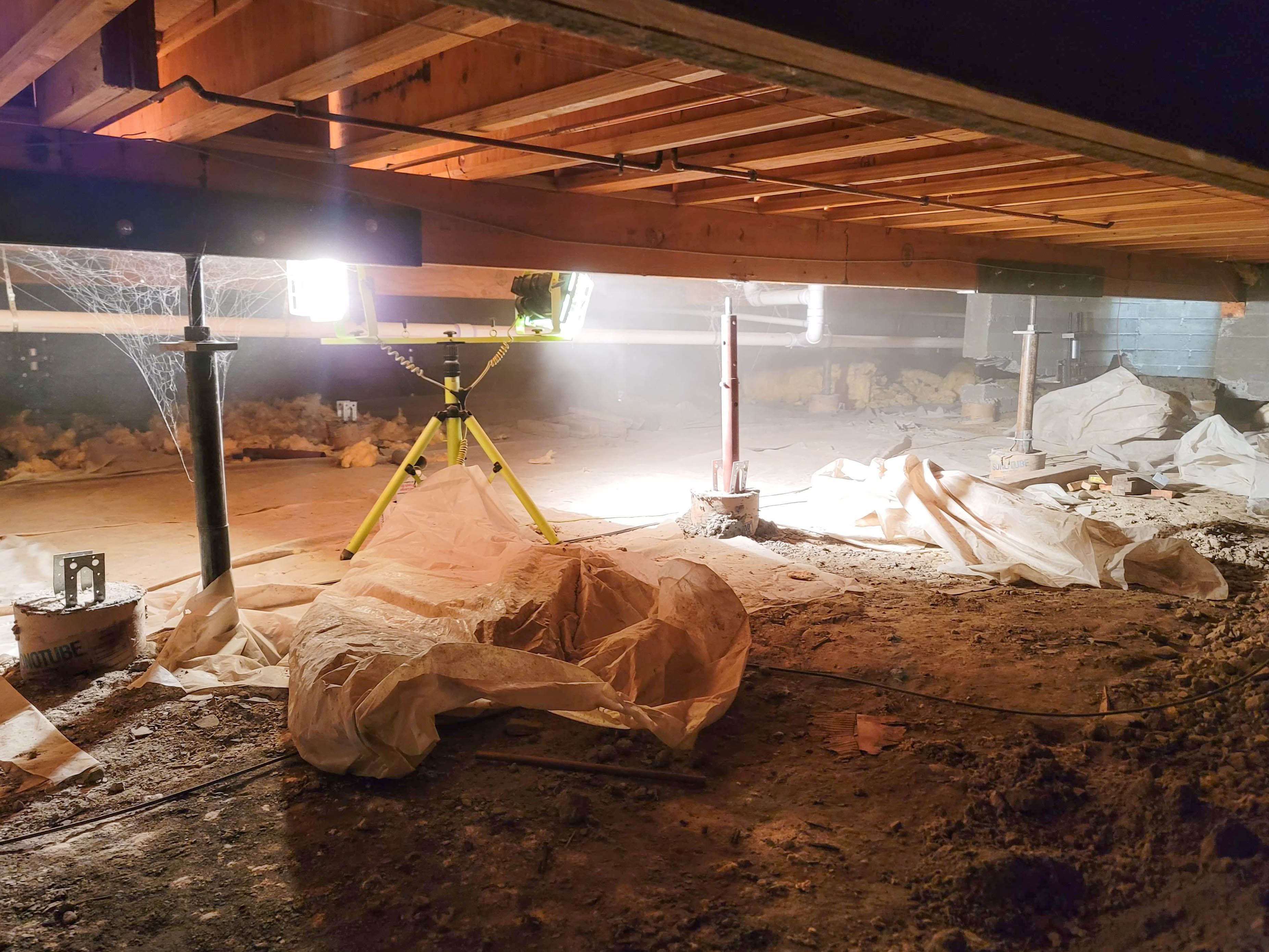DIY Crawlspace Maintenance Tips for Norfolk Homeowners
Understanding Your Crawlspace
Crawlspaces are an integral part of many Norfolk homes, providing a buffer between the ground and the first floor. This area often houses essential components like plumbing, electrical, and HVAC systems. However, due to their location and nature, crawlspaces can become neglected, leading to potential issues with moisture, pests, and structural integrity. Regular DIY maintenance can help keep these problems at bay.

Inspect for Moisture
Moisture is one of the most common issues in crawlspaces, especially in humid climates like Norfolk's. Excess moisture can lead to mold growth, wood rot, and attract pests. To inspect for moisture, start by looking for any signs of standing water or dampness on the ground and walls. Check the condition of the vapor barrier, which should cover the entire ground surface effectively. If it's damaged or missing, replace it immediately.
Additionally, ensure that gutters and downspouts are directing water away from your home's foundation. Installing a dehumidifier in the crawlspace can also help manage moisture levels.
Seal Air Leaks
Air leaks can contribute to energy inefficiency and moisture issues in your crawlspace. To find leaks, inspect the crawlspace vents, doors, and any openings around pipes or wiring. Use weatherstripping or foam sealant to close gaps and improve insulation. This step not only helps in maintaining a stable environment in the crawlspace but can also reduce your overall energy bills.

Check for Pest Infestation
Crawlspaces are a favorite spot for pests like rodents and insects. Regularly inspect for signs of infestation, such as droppings, nests, or gnaw marks. If you notice any evidence of pests, it's essential to take action promptly. Set traps or use natural deterrents to manage minor infestations. For larger problems, it might be necessary to consult a pest control professional.
Prevent future infestations by sealing entry points and keeping the area clean and dry. Remove any debris or stored items that could serve as nesting grounds.
Maintain Structural Integrity
Over time, the structural elements of your crawlspace can suffer from wear and tear. Regularly check the support beams, joists, and any wooden components for signs of rot or damage. If you spot any concerning areas, it may be necessary to consult a professional contractor to assess and repair any structural issues.

Ensure Proper Ventilation
Good ventilation is crucial in preventing moisture build-up and maintaining air quality in your crawlspace. Ensure that vents are open and unobstructed, allowing for adequate air circulation. If your home does not have enough vents, you might consider adding more or installing a crawlspace fan to improve airflow.
Regularly inspect the vent covers to ensure they are intact and functioning correctly, replacing any damaged ones to prevent pest entry and improve ventilation.
Schedule Regular Check-Ups
Even with regular DIY maintenance, it's beneficial to have a professional inspection every few years. Experts can identify and address issues that might not be visible to the untrained eye. This proactive approach can save you from costly repairs down the line and ensure that your home's crawlspace remains in optimal condition.
By following these DIY maintenance tips, Norfolk homeowners can effectively manage their crawlspaces, ensuring a healthy and protected home environment.
